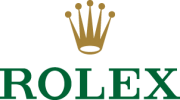BLOODHOUND's Driver, Andy Green, shows you around his 1,000mph office.
Andy has drawn on his experience of flying fast jets and driving World Land Speed Record winners Thrust SSC and JCB Dieselmax to design the dashboard and cockpit layout. Good ergonomics are vital given that BLOODHOUND SSC will cover a mile in 3.6 seconds, or 150m in the (300 millisecond) blink of an eye.
The central screen shows the speed in miles per hour and Mach number (Mach 1 being the speed of sound), calculated by GPS, plus jet engine and rocket outputs.
Dynamic speed indicators help Andy to judge when to fire the rocket and deploy the braking systems. Wheel loads are also given prominence. BLOODHOUND does not use aerodynamic downforce, as a Formula 1 car does, while lift at the nose or rear axle must also be avoided at all costs. The need to carefully balance forces throughout its 1000mph speed range is one of the major reasons why shaping the Car has taken 30 design-years.
The left-hand screen shows hydraulic pressures and temperatures in the braking and airbrake systems, while the one to Andy's right provides information about the three engines, including temperatures, pressures and fuel levels. Together, the EJ200 jet engine and Nammo hybrid rockets produce around 210 kN (21 tonnes) of thrust, equivalent to 135,000 thrust hp, or 180 F1 cars, and Andy will monitor their status at key points during each run.
BLOODHOUND's dash also features two precision-engineered analogue Rolex instruments: a chronograph with built-in stopwatch, and a speedometer graduated up to 1,100mph (1,770km/h). The speedometer is a vital back-up to allow the Car to be stopped safely should the digital dashboard fail, while the chronograph will help to time the start-up and cool-down of the jet, and help to monitor the performance of other systems. Tested to withstand the severe vibration at 1,000 mph and the desert heat, these bespoke Rolex instruments are unique to BLOODHOUND SSC.



